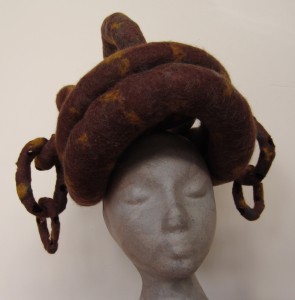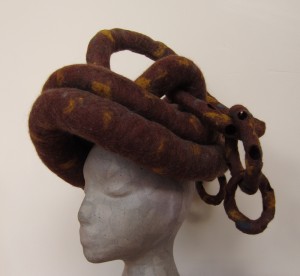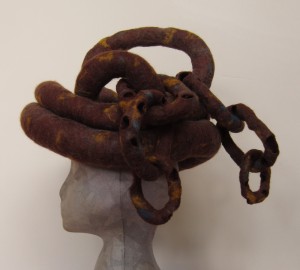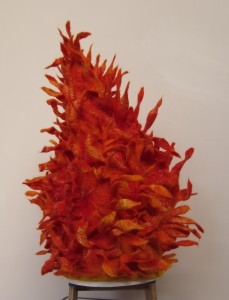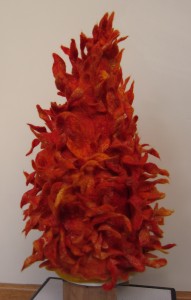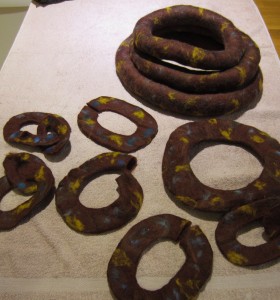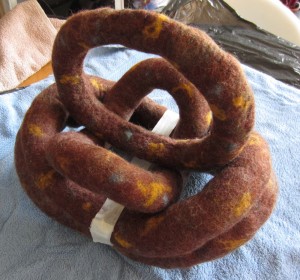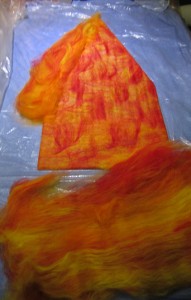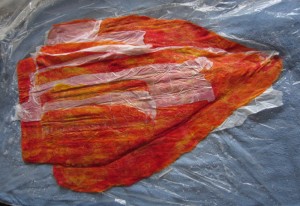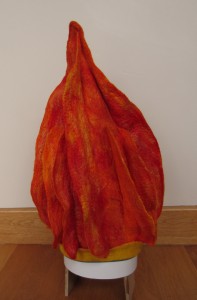The 2 hats are definitely taking shape, I’m not entirely sure I like the shape or fit of the chain hat but I like how the chain links are mobile
I’m really pleased with how the flame hat is coming along though:
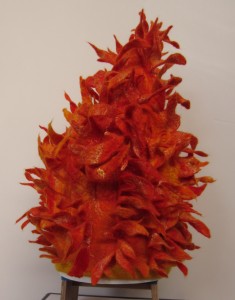 I’m planning to add some textile foil to the flames just to finish it off but it is very nearly there!
I’m planning to add some textile foil to the flames just to finish it off but it is very nearly there!

